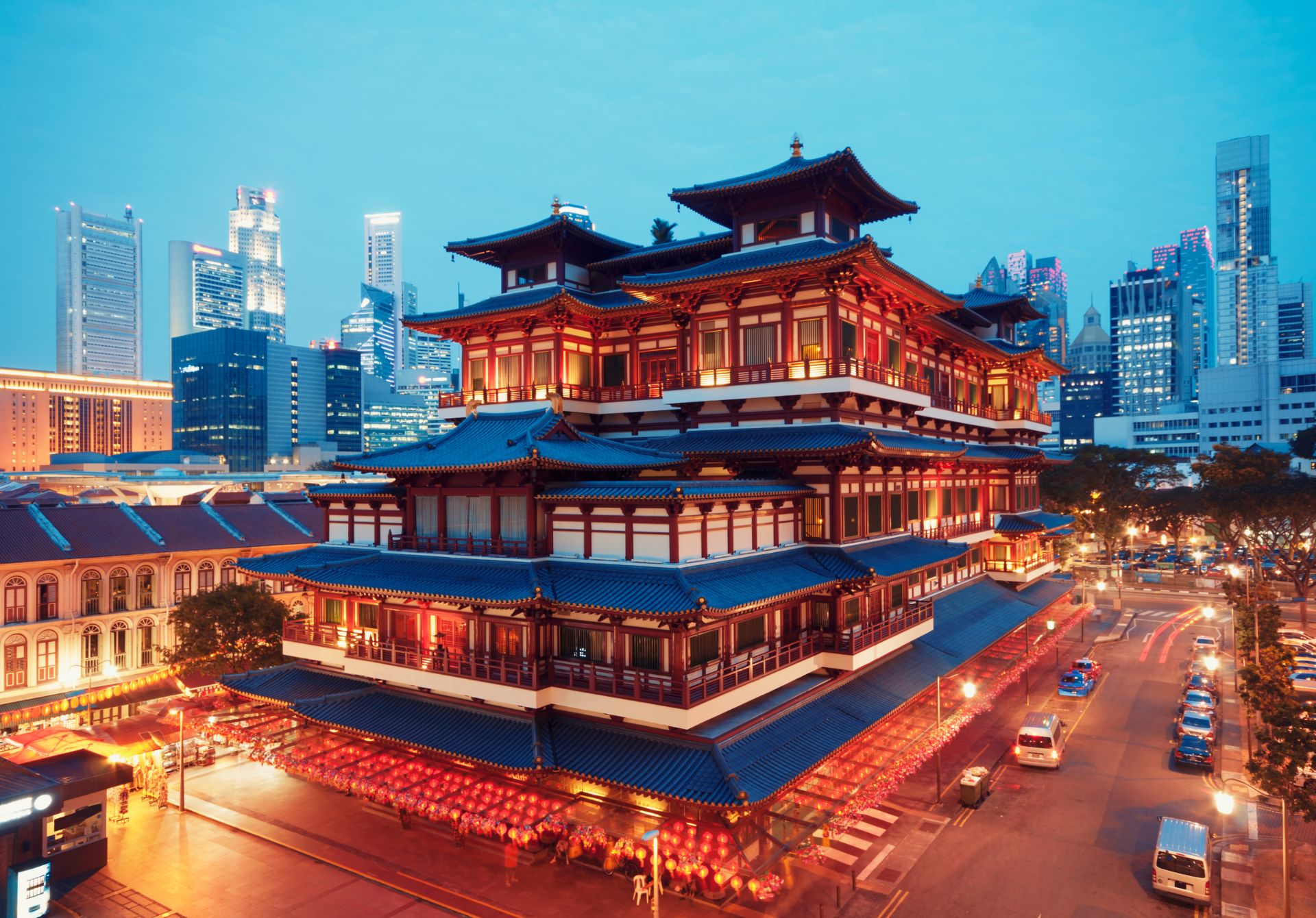Nestled in the heart of Singapore, Chinatown stands as a vibrant testament to the city-state’s rich cultural heritage and diverse history. This bustling district, with its blend of traditional charm and modern vitality, offers visitors a unique glimpse into Singapore’s past while showcasing its evolution into a cosmopolitan hub. From its humble beginnings as an enclave for Chinese immigrants to its current status as a must-visit tourist destination, Chinatown has undergone significant transformations while preserving its cultural essence.
Historical Background
Chinatown’s roots trace back to the early 19th century when Sir Stamford Raffles, the founder of modern Singapore, designated the area as a Chinese settlement. The district quickly became a focal point for Chinese immigrants, primarily from the southern provinces of China, who arrived in search of better economic opportunities. These early settlers brought with them their customs, traditions, and way of life, laying the foundation for what would become one of Singapore’s most iconic neighborhoods.
Throughout the 19th and early 20th centuries, Chinatown grew rapidly, becoming a densely populated area characterized by shophouses, temples, and clan associations. Despite challenging living conditions and overcrowding, the community thrived, establishing businesses and cultural institutions that would shape the district’s identity for generations to come.
Architectural Heritage
One of Chinatown’s most striking features is its well-preserved architecture, which offers a tangible link to Singapore’s past. The district is renowned for its rows of colorful shophouses, typically two or three stories tall, with distinctive five-foot ways (covered walkways) that provide shelter from sun and rain. These shophouses, many of which date back to the late 19th and early 20th centuries, showcase a unique blend of Chinese, Malay, and European architectural elements.
Notable examples of Chinatown’s architectural heritage include:
1. The Thian Hock Keng Temple: Built in 1839, this is one of the oldest and most important Hokkien temples in Singapore. Its intricate carvings and ornate decorations exemplify traditional Chinese architectural styles.
2. The Buddha Tooth Relic Temple: A more recent addition to Chinatown’s skyline, this imposing structure combines modern construction techniques with Tang Dynasty architectural style, housing a purported tooth relic of Buddha.
3. The Sri Mariamman Temple: Singapore’s oldest Hindu temple, founded in 1827, stands as a testament to the multicultural fabric of Chinatown and the broader Singaporean society.
Cultural Significance
Chinatown’s significance extends far beyond its architectural marvels. The district serves as a living repository of Chinese culture in Singapore, playing a crucial role in preserving traditions, customs, and heritage. This cultural importance is evident in various aspects of daily life and is particularly pronounced during festive seasons.
The Chinese New Year celebrations in Chinatown are among the most vibrant and extensive in Southeast Asia. The streets come alive with colorful decorations, lanterns, and bustling markets selling traditional goods. The annual Chinatown Mid-Autumn Festival is another highlight, featuring mooncake fairs, lantern displays, and cultural performances that attract both locals and tourists alike.
Culinary Delights
No exploration of Chinatown would be complete without delving into its rich culinary scene. The district is a food lover’s paradise, offering an array of traditional Chinese dishes alongside other Asian cuisines. From street food stalls to upscale restaurants, Chinatown caters to all palates and budgets.
Some must-try culinary experiences include:
1. Chinatown Complex Food Centre: One of the largest hawker centers in Singapore, offering an extensive selection of local dishes at affordable prices.
2. Traditional Bak Kut Teh: A hearty pork rib soup that’s a staple of Singaporean cuisine, with several famous establishments in Chinatown specializing in this dish.
3. Michelin-starred hawker stalls: Chinatown is home to some of Singapore’s famed Michelin-starred street food vendors, showcasing the high quality and affordability of local cuisine.
Modern Developments and Challenges
While Chinatown has managed to preserve much of its historical character, it has not been immune to the rapid modernization that has transformed Singapore. The district faces ongoing challenges in balancing preservation with development, as well as maintaining its authenticity in the face of increasing commercialization and tourism.
Recent years have seen efforts to revitalize Chinatown while respecting its heritage. These include the restoration of shophouses, the development of new cultural spaces, and the introduction of interactive exhibits that tell the story of early Chinese immigrants. The Chinatown Heritage Centre, housed in restored shophouses, offers visitors an immersive experience of life in early Chinatown, complete with recreated living spaces and personal stories of former residents.
Chinatown, Singapore, stands as a vibrant testament to the enduring spirit of cultural preservation amidst rapid urban development. Its narrow streets and historic buildings tell the story of early Chinese immigrants who laid the foundation for Singapore’s multicultural society. Today, it remains a crucial part of Singapore’s cultural landscape, offering a unique blend of history, tradition, and modernity.
As Singapore continues to evolve, Chinatown serves as a reminder of the importance of preserving cultural heritage. It offers valuable insights into the challenges and opportunities of maintaining cultural identity in a globalized world. For visitors and locals alike, Chinatown provides a fascinating journey through time, allowing them to experience the rich tapestry of Chinese culture in Singapore while witnessing its ongoing transformation and adaptation to contemporary life.
In essence, Chinatown is not just a tourist destination but a living, breathing community that continues to shape Singapore’s cultural narrative. Its ability to balance tradition with innovation makes it a model for cultural preservation in urban settings worldwide, ensuring that the stories, flavors, and traditions of the past continue to enrich the lives of future generations.

